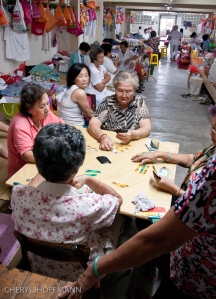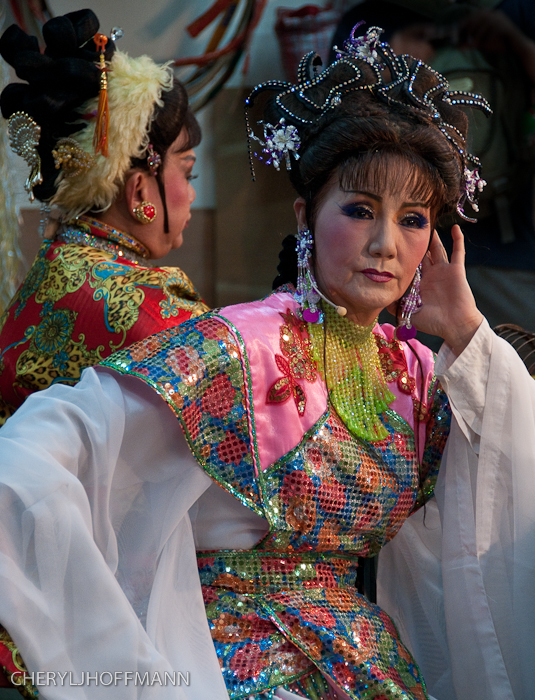Nine Emperors, Nine Days in the Ninth Lunar Month, Nine Facts
It dawned on me that I have jumped ahead in this blog, trying to talk about some of my own personal revelations, when I really should go back to basics. The Nine Emperor Gods Festival celebrates the balance of yin and yang. It is a complicated ritual, complete with the presence of unseen deities, eye-smarting incense, trances and Chinese opera. It is a time of spiritual strengthening, personal sacrifice and the power of shared beliefs. Add to that a colorful and noisy street party atmosphere and it is easy to understand the attraction.

Here are some embellished facts x NINE:
1) The Festival of the Nine Emperor Gods is celebrated on the first nine days of the ninth lunar month in the Chinese calendar. In 2010 the dates are October 8 to October 16 in the western calendar. Don’t forget though, that in Ampang the festival in 2010 begins on October 3rd to celebrate the renovations at the temple.
2) The Nine Emperor Gods are shrouded in myth and wherever you go, you will hear a variation on the story. In general the Nine Emperor Gods are believed to be the nine sons of the Taoist Goddess of Heaven (Duomo) – the lovely one with nine arms, because what mother doesn’t need nine arms!
Some even say that the emperors were born on the ninth day of the ninth month. The number nine has special significance to the Chinese, being the penultimate single digit number and, although it’s not the number 8, it is a homophone to the word “everlasting” and is therefore auspicious. There are nine emperors, but they are worshiped as one. This is a central tenet of the festival. The Emperors are the guardians of health, wealth and prosperity and their descent to earth for nine days is a cause for prayer and celebration.
3) When worshiping, devotees should raise their palms three times, kneel three times and prostate three times, making nine movements that together represent the cosmos – Heaven, Earth and Hades
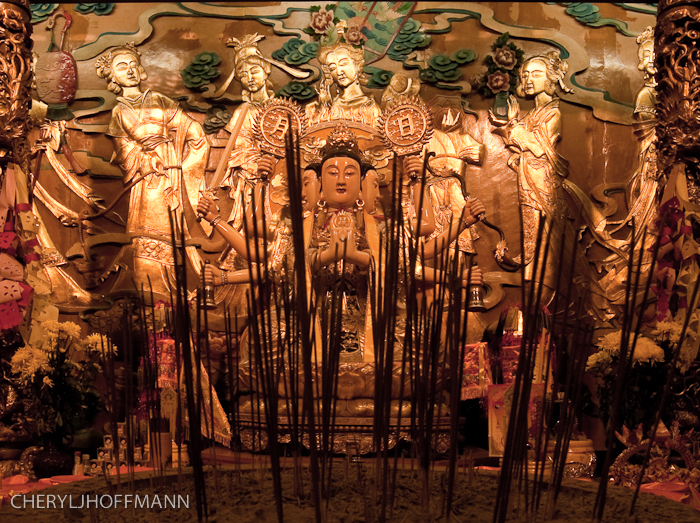
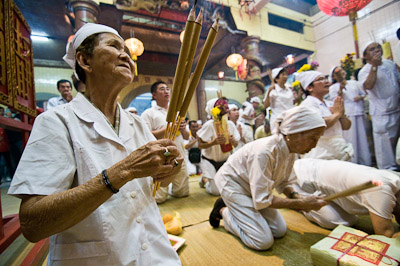
4) Worshipers and visitors at the Nine Emperor Gods Temple should be freshly bathed and wear clean, if not new, clothes. Devotees who stay at the temple during the festival wear all white when they are praying and/or in the presence of the emperor. They keep a strict vegetarian diet. Only vegetarian food is served on the temple grounds.
5) The Bridge crossing ceremony symbolizes water or the concept of Yin. The ceremony takes place on the eighth day of the festival, in the evening and is presided over by priests and Trance Masters. All visitors to the temple may participate. The ceremony allows participants to overcome the watery or Yin forces in their lives which are necessary but sometimes troubling. In 2010, the Bridge crossing ceremony will take place in Ampang on October 15.
6) The Fire walking ceremony symbolizes just that, fire, or the concept of Yang. The ceremony takes place on the final, ninth, evening of the festival. Only men may participate in the fire walking and, in Ampang, only men who are devotees may walk the fire. (Women don’t walk in the fire because they are considered too watery.) Those who walk accept the forces of Yang for all those attending. This is the most spectacular event of the festival and attracts huge crowds. The fire walking in 2010 will take place on October 16th.

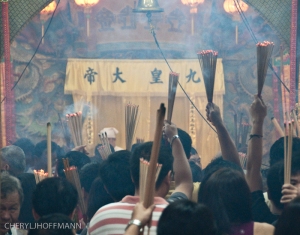
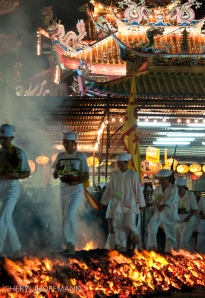
7) Thousands of visitors come to the temple in Ampang every day. It is really smokey from all the burning of joss sticks and paper money. Worshipers make money donations to the temple as well. There is a complex communal system forborrowing money from the temple, that can be used to start a new business or marriage or something along those lines. The money can be borrowed but must be returned the next year from the profits made after the investment. Serious business!
8) Reservations for spaces to sleep in the men’s and women’s dormitories must be made six months in advance. For 70RM one gets a space on a long platform and three vegetarian meals a day. Most of the women attend annually and stay in the same dorms each year, making it a bit like summer camp. It is common to see mother/daughter/granddaughter combinations. In 2010, with the extended dates of the festival, your payment gets you a full two weeks of accommodation and meals!
9) Chinese opera, in the Amoy style from Fujian province, is performed on a stage across the road from the main temple. On the evening that the Emperor arrives, the first opera is performed upon his arrival and then every day at 2pm and 8pm throughout the festival. The evening performance is more elaborate. The same Singapore opera troupe has been performing in Ampang for 17 years. Very few visitors stop to watch – the opera is really being performed for the Emperor. Here’s a link to an old and beautiful recording of Amoy opera that might help you understand. http://hajimaji.wordpress.com/category/china/amoy-opera/
